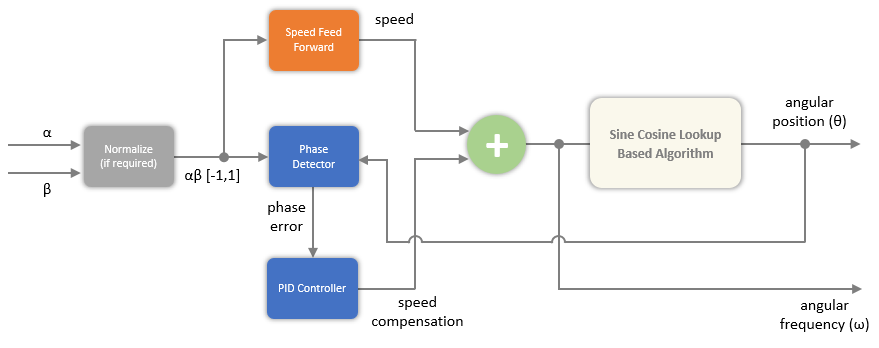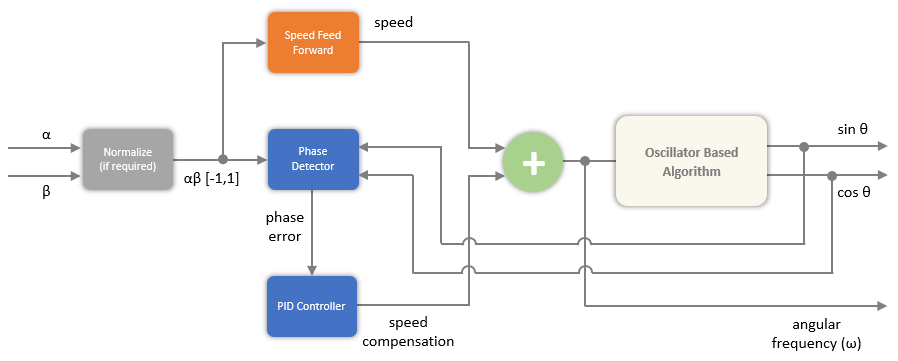PLL with Feed Forward
Compute position and angular frequency from orthogonal sinusoidal signals
Since R2023b
Libraries:
Motor Control Blockset /
Signal Management
Description
The PLL with Feed Forward block computes angular position (θ) or its sine and cosine equivalents (sin θ, cos θ) and the angular frequency (ω) from two orthogonal sinusoidal signals.
In addition to the angular frequency, the block uses either a sine-cosine lookup table to calculate the angular position or an oscillator based algorithm to compute the sine and cosine equivalents of position. You can use the Position output parameter to output either angular position or its sine and cosine equivalents.
The two orthogonal sinusoidal input signals must have identical peak magnitudes. If the inputs are not normalized in the range of [-1,1], select the Enable input normalization parameter.
The following image shows the relationship between block inputs and outputs:

For more information on the block algorithm, see Algorithm.
Note
The block does not support 16-bit fixed-point inputs.
In addition, you can use the advanced options to enable the ParameterBus input port, which you can use with the Compute Parameter block to update the block parameters optimally at run-time. You can use this functionality when motor parameters can change over time, for example, while building applications that may require swapping of motors at run-time.
Examples
Ports
Input
Output
Parameters
Algorithms
References
[1] G. Liu, H. Zhang and X. Song, "Position-Estimation Deviation-Suppression Technology of PMSM Combining Phase Self-Compensation SMO and Feed-Forward PLL," in IEEE Journal of Emerging and Selected Topics in Power Electronics, vol. 9, no. 1, pp. 335-344, Feb. 2021, doi: 10.1109/JESTPE.2020.2967508.
[2] Se-Kyo Chung, "A phase tracking system for three phase utility interface inverters," in IEEE Transactions on Power Electronics, vol. 15, no. 3, pp. 431-438, May 2000, doi: 10.1109/63.844502.
[3] Sreeraman Rajan, Sichun Wang, Robert Inkol, and Alain Joyal. "Efficient Approximations for the Arctangent Function." IEEE SIGNAL PROCESSING MAGAZINE (MAY 2006).
Extended Capabilities
Version History
Introduced in R2023b



